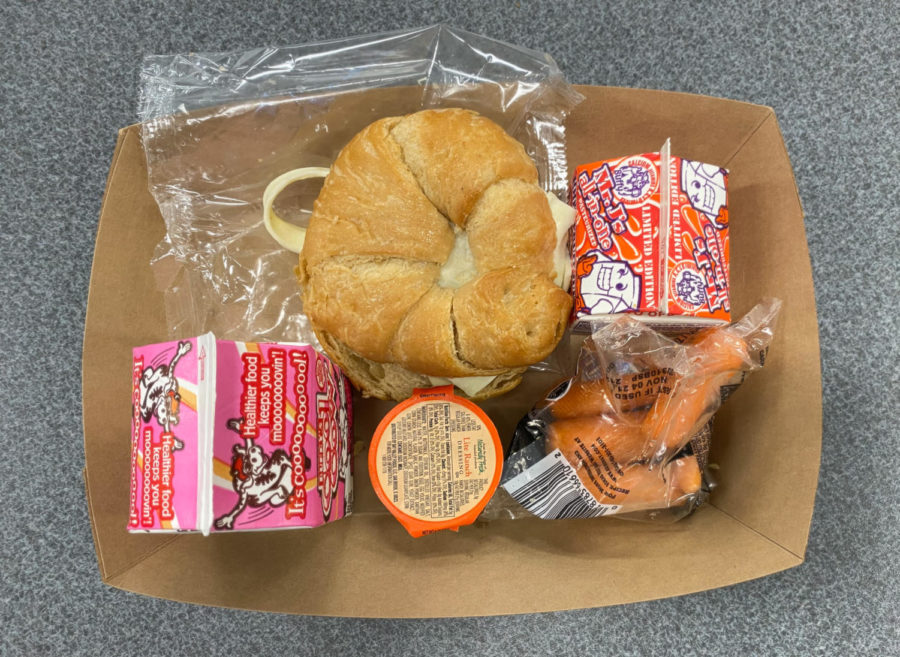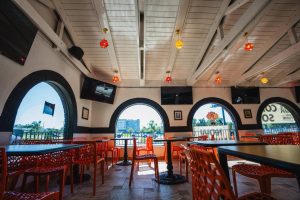What is happening to your lunch?
A food shortage affects school lunches around the world.
Photo Grace Hilton
The school lunch on November 5th, 2021 contains a breakfast sandwich, a drink, and carrots. You can pick also pick a drink as one of your “side items” as shown by the two drinks in the photo.
November 15, 2021
When students come to school and work all morning, one of the brighter moments of the day is the one lunch period to eat and relax. It can be especially upsetting to find less food than usual, especially for the large number of students that don’t eat breakfast.
Recently, schools have been faced with a lack of food to prepare for students and people are starting to notice. What may not be known is that these events are the effect of a global supply change crisis, which came from the upcoming consumer peaks and COVID-19.
Current issues with the supply chain all started with the quarantine brought about by the well-known pandemic happening this year. When people were recommended to stay indoors, online sales began to rapidly increase. This caused a large boom in online retail and forced shipping companies to adapt to these changes. Factories (which were empty to stop Corona-virus spreading) were shut down for months, which would also begin a long term effect on the supply chain. People are starting to return to stores for the first time in almost 2 years, so shipping companies have to adjust to support online and in-person shopping. This creates slower processes for shipping and transportation of consumer goods.
“None of this means that the inflation of the spring will be lasting; plenty of products are experiencing more routine pricing dynamics that bear out the efficiency of the markets.” wrote Neil Irwin from The New York Times.
In addition, November and December mark the largest consumer spending period. With the pressure on shipping company to provide during a period of change while also supporting early holiday season shopping, many stores like Walmart and Target aren’t stocking their shelves full.
“Port congestion and a shortage of container shipping capacity may last into the fourth quarter or even mid-2022,” said Hsieh Huey-chuan of Evergreen Marine Corp.
The best thing to be done in this situation is to be prepared for it to linger.
“We’re doing our part. We’re doing our best,'” said Ricky McCray, a dock worker.











